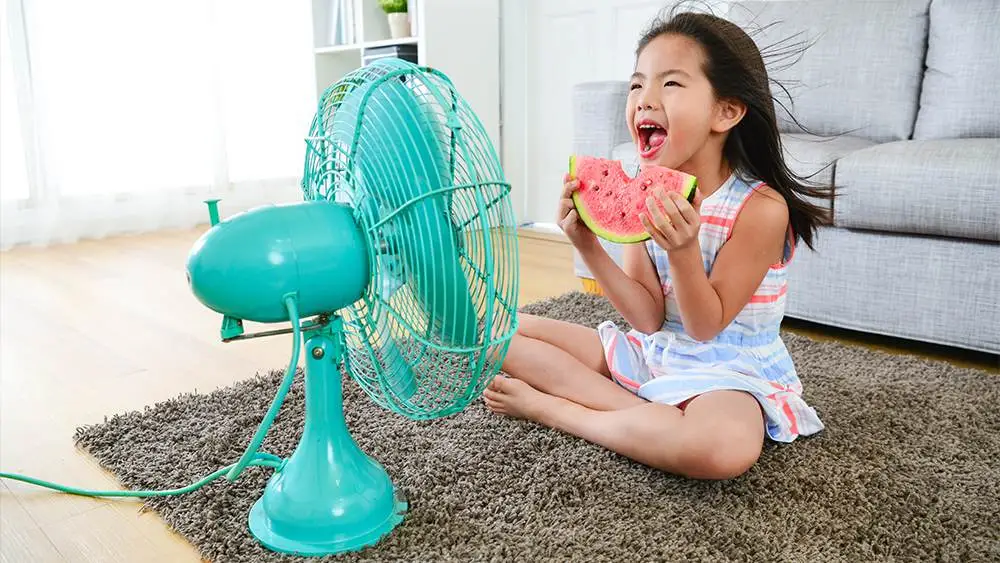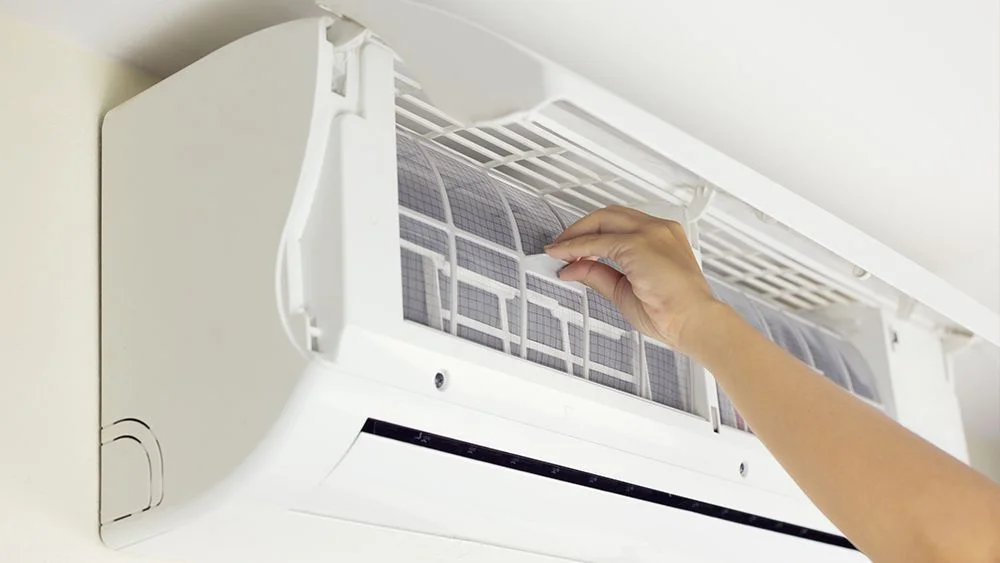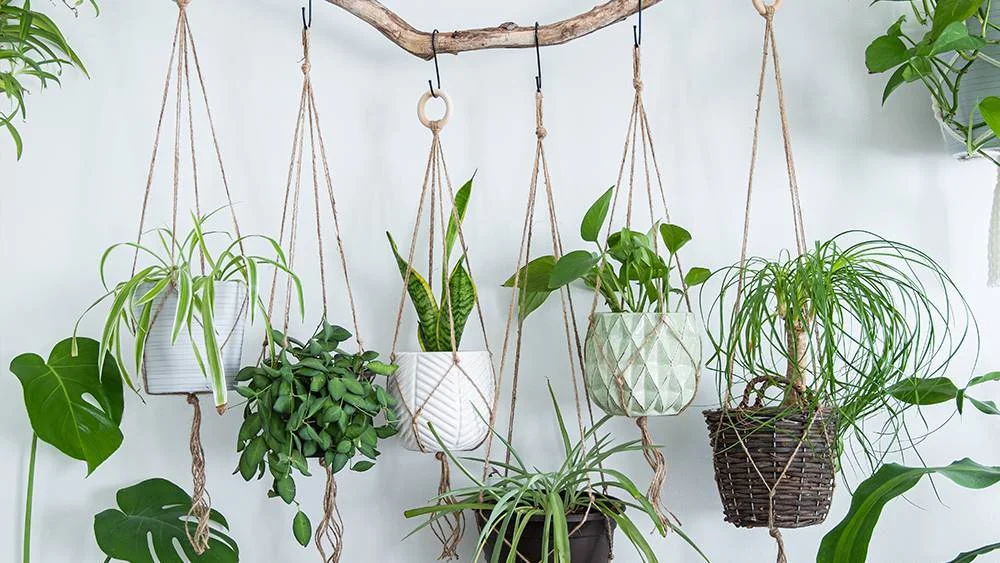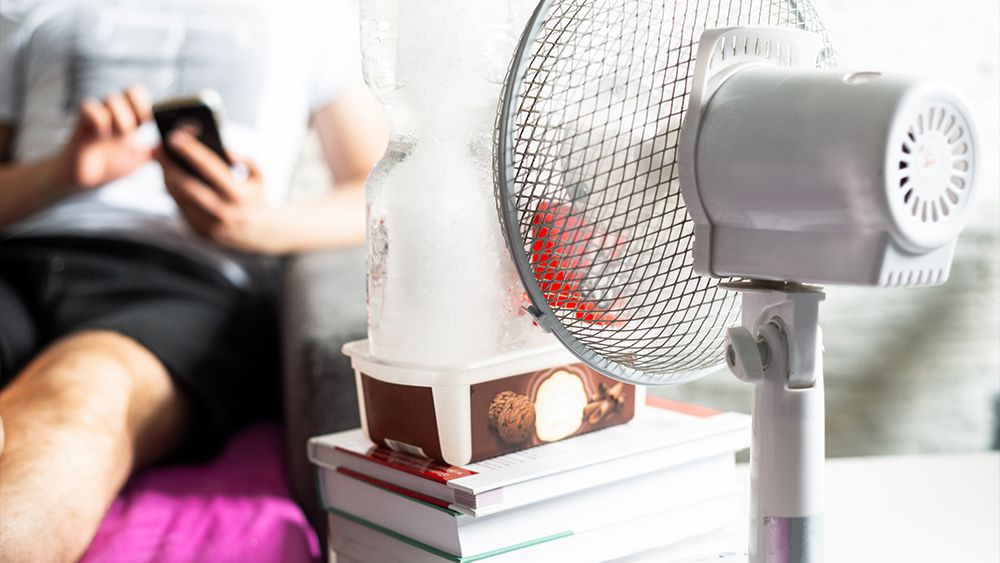
Key Takeaways
- Simple solutions like using reflective window films, improving insulation, and using ceiling fans can help lower your indoor temperature.
- Switch to LED lights as they emit less heat compared to traditional incandescent bulbs.
- Plant trees or shrubs around your house to provide natural shade and to reduce heat absorption.
If you are looking for solutions on how to keep your house cool in summer without breaking your bank, you’re in the right place!
Summer truly is the best season of the year! Beaches, watermelon coolers, suntans, BBQs, and midday dips in the pool are some of the many things that keep us looking forward to summertime.
But, unfortunately, many of these joys are often overshadowed by the searing heat and unbearable humidity.
If you, too, are wondering how to stay cool in summer, then fret not!
In this article, we have compiled 22 tips and tricks to not only keep your home cool and comfortable in summer but also save hundreds in energy costs. So, whether you’re looking for ways to hack your AC to cool better or need fast AC cooling solutions, we’ve got you covered!
How to Keep Your House Cool in Summer
Air conditioners are the go-to solution for keeping your house cool on hot and humid summer days. But, while your HVAC unit will save your summer, it can sometimes need a little extra help. Here are all the top ways to compliment your air conditioner for even better cooling:
1. Keep Sunlight Out
As tempting as it may be to let the natural light brighten up your room, it’s important to remember that light equates to heat.
The more sunlight that flows into your home, the warmer you will feel and the harder your AC will have to work. So, to keep the temperature in your house bearable, keep your blinds closed, especially those on the west and north-facing windows. Better yet, opt for blackout curtains that block out heat entirely and keep your home cool all summer long.
2. Hack Your Windows
Around 76% of the light that falls on windows enters the home to become heat. Reflective window films can block up to 78% solar heat and 99% harmful UV rays. While excess sunlight will only make your house warmer, UV rays damage your health and your furniture. So not only are these window films a summer essential, but they’re also crucial for keeping your skin and furnishing safe.
Window films are an easy DIY project, and there are a ton of options to choose from based on your needs.
3. Install an Awning
Awnings are the perfect alternative to trees. They’re pretty helpful if you either don’t have room for trees or don’t want to wait long enough for a tree to grow. Awnings typically fit above your windows and protect your home from the sunlight. This lowers the amount of light your home absorbs and will thus keep your home cool in summer. According to the US Department of Energy, window awnings can reduce up to 65-77% solar heat gain.
4. Get a Smart Cooling Solution
The one thing that can amp up your home’s cooling in the summer is if your AC had a brain of its own. While you can’t engineer your AC unit to think for itself, investing in a smart thermostat (central systems) or mini-split thermostats (ductless systems) is the next best thing.
These devices can help you set cooling schedules for the whole week and also turn your air conditioner on when you enter your home’s vicinity. In addition to numerous smart features and benefits, they also help save up to 25% energy.
Your best choice to make any mini-split, window,
or portable AC smart. Enhance your comfort and savings.

5. Create a Cool Roof
Cool roofs reflect sunlight and heat, effectively keeping your home cool in the summer. These roofs might have reflective tiles or shingles, reflective paint, or a sheet covering. Cool roofs can be installed on nearly any type of building and are especially useful for spaces that don’t have air conditioners, such as garages.
Here are some more options for garage cooling.
6. Close Doors
To keep the cool air where you need it most, close off doors to unused rooms. It prevents cool air from leaking to parts of the house where you don’t need it. It also lowers the amount of effort your air conditioner needs to put into cooling more extensive areas.
Also, seal off any gaps or crevices around windows and doors since lots of cool air usually escapes through them. Seal gaps around doors and windows, and use draught excluders to ensure the cool air doesn’t leak out.
7. Change Out the Sheets on Your Bed
This tip might seem unimportant, but it makes a world of difference to your home’s temperature. Pick lighter fabrics, preferably in brighter colors such as white, since they reflect light and heat and help keep your house cool in the summer. The material of your sheets also matters because lightweight fabrics breathe easier than thicker ones. Since changing your sheets now and then is a great way to freshen up your home, this is a valuable investment.
8. Switch Off Appliances
You would be surprised by the amount of waste heat that appliances around your house generate. In addition to switching them off when not in use, try to avoid using them whenever possible. For example, hang your clothes out to dry instead of using the dryer and hand-wash dishes. Also, schedule your chores and only use appliances such as irons after the sun goes down. Not only will limiting your use of devices keep your house cool in the summer, but it will also cut back your electricity costs.
9. Avoid Using the Oven or Stove
As President Truman famously said, “If you can’t stand the heat, get out of the kitchen!”
Cooking generates excess heat and can significantly raise the temperature inside your home. Also, nobody wants to stand in the hottest part of their home in this weather. Instead, opt for meals that don’t need cooking, such as salads or sandwiches. If you must cook, try doing it outdoors on the grill. Not only will this keep your home cool, but it also gives you an excellent excuse to get extra mileage out of your grill!
10. Upgrade Your Light Bulbs
If you’ve been looking for a chance to switch your conventional incandescent light bulbs with LEDs, now is the perfect time for it. Incandescent lights give off 90% of their energy as heat. On the other hand, LED bulbs generate lesser heat and save more on electricity.
11. Clean Your AC Filters Regularly

If your air conditioner isn’t working as effectively, it might be time to change the air filters. A clogged or filthy air filter makes your AC work harder and impacts your indoor air quality. Not only will this lead to allergies and inefficient warming, but it will also drive up your electric bills. Therefore, you need to clean your AC’s air filters every two weeks and replace them every four months as a rule of thumb.
12. Use Ceiling Fans Properly
Ceiling fans on their own won’t do much to lower the temperature in a room. However, when used in combination with an air conditioner, fans can be tremendously helpful. First, ensure that your fan is rotating counter-clockwise in the summer. When turning this way, fans will push the cooler air down towards you and keep your home cooler on warmer days.
13. Insulation is Key
Insulation is often associated with retaining heat inside homes. Similarly, they also work to keep the heat out and cool air in. So, adding insulation to your attic and walls will make a significant improvement to your home’s climate, even in the warmer months. It also cuts back on cooling and heating costs. Insulation is also a pretty inexpensive and simple solution, and you can also try DIY insulation for further savings.
14. Install an Attic Ventilator
Attics can get pretty warm during the summer, sometimes heating up to 150 degrees. All of this heat will most likely spread throughout your home, raising the overall temperature. In addition to insulating your attic, you can also invest in an attic ventilator or attic fan. These fans work by evacuating the hot air from your attic and drawing in cool air from outside. As a result, your attic remains relatively cool, and this can help your AC keep your house cool in the summer.
Read this article to learn more about attic cooling.
15. Hone Your Green Thumb

It’s no secret that plants play a significant role in keeping the temperature of the earth’s atmosphere down. They can also have a similar, although far less drastic, impact on the temperature in your home. When the temperatures rise, plants will release water from their leaves. This process is transpiration, and it helps plants cool themselves and their surroundings. Of course, not all houseplants will affect your home’s temperature, so it’s important to pick plants that will cool your house down. Furthermore, some air-purifying houseplants also help improve indoor air quality by removing harmful pollutants.
16. Plant Foliage to Keep Your House Cool in Summer
Trees and foliage act as natural barriers to sunlight and also significantly improve the landscape. While it may be a few seasons before you can reap the benefits of this, it will be worth it. You can choose fast-growing trees such as Sycamore, Maple, or Poplar trees. Also, opt for deciduous trees that lose their leaves in the winter. That way, your home will have shade in the summer, but you’ll get plenty of sunshine in the winter.
How To Keep House Cool in Summer Without AC?
As effective as air conditioners are for keeping our homes cool, they aren’t always available. So here are some tips on how to keep your house cool without the AC.
17. Ice Your Fan

While nothing can quite match the cooling capabilities of an air conditioner, this fan and ice combo comes pretty close. To set it up, strategically place a bowl or pan of ice on the floor in front of a non-oscillating fan. Then, turn the fan to the area you want to cool, sit back and enjoy the icy-cool breeze that your DIY AC setup creates! A cost-effective and nifty hack to keep your house cool all summer long!
18. Invest in a Dehumidifier
Dry heat is a nightmare to deal with, and the only thing worse is moist heat. The ideal indoor humidity level in summer should be around 40% – 50%. Dehumidifiers remove excess moisture from the air in your home and make it more comfortable, even in high temperatures.
Most dehumidifiers will come with sensors that turn the device off when the ideal humidity level is met. Also, use the water gathered by your dehumidifier to water your plants for added conservation.
19. Install a Whole-House Fan
Whole house fans are pretty similar to attic fans. However, neither is a replacement for the other since they target different areas of the house. Whole house fans are typically installed in the attic. They work by drawing the hot air from your home into your attic, creating a negative pressure that triggers the inflow of cool air from outside. Not only do these fans keep your house cool, but they also help get rid of pollutants in the indoor air, thereby improving the air quality in your home.
20. Make Use of Exhaust Fans
Exhaust fans come pretty handily, especially if you want to cool a room with no windows. Installing exhaust fans around your home will help push out the hot air inside your home making space for fresh air from outside. However, this method only works best when the inside temperature is higher than the outside.
21. Keep the Doors and Windows Open
One of the inexpensive ways to cool down your home is to open windows on opposite ends of your house in the evening to let the cool breeze in. Creating a cross breeze will improve home ventilation and help you beat the heat without air conditioning.
Also, leave the doors inside your home ajar to maximize the free flow of air. Finally, if you have box fans, place them in your windows to act as exhaust fans.
22. Install Cooling Curtains
This one is a bit of an old-timey hack, but it’s pretty effective. First, spritz your curtains, or any sheet, with cold water and hang it over your curtains. Then, as the breeze flows into your home, it blows through the water, evaporating it and, in turn, cooling your house down. You could also dip the hem of your curtains in a bucket of water. That way, you won’t have to keep spritzing the curtains with water over and over again.
Keeping your house cool in the summer is crucial for you and your pets’ wellbeing and comfort. But, while air conditioners are the go-to solution for balmy summer days, they can sometimes need a little extra help. Simple upgrades to your home, such as insulation and switching light bulbs, can make a significant difference to your home temperature. There are also plenty of ways to keep yourself cool in the summer without the AC. Although these won’t make your home as comfortable as the air conditioner will, they are still pretty nifty.









2 Comments. Leave new
Great ideas. I am already using some of them and they work!
Insulation will help you keep the desired temperature in your house all year round, protecting it against cold in winter and excess heat in summer.